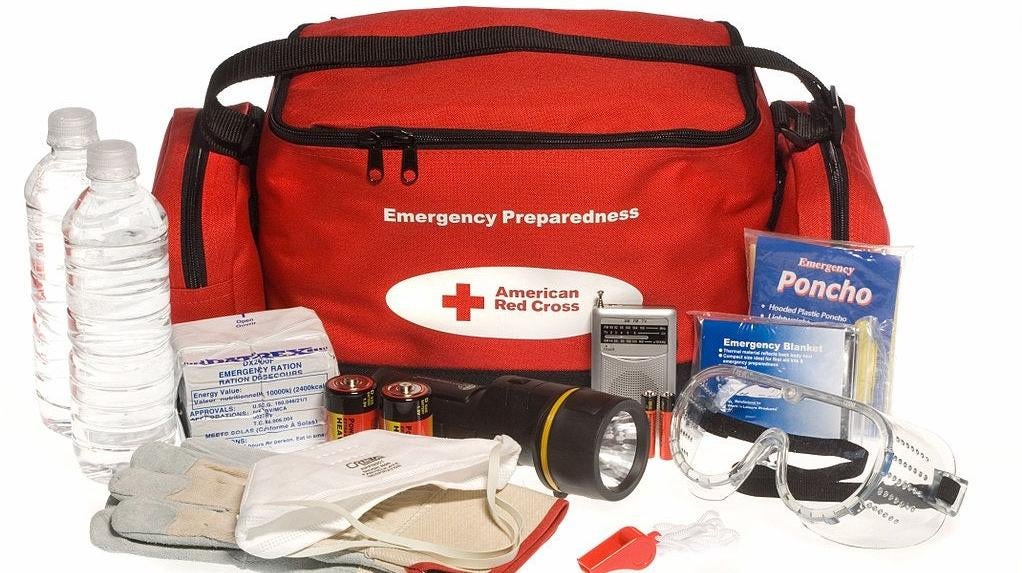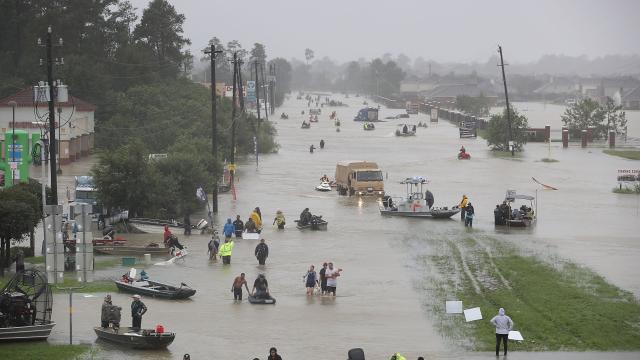Climate change-fuelled natural disasters, from wildfires to floods, are affecting more Aussies every year. Many people are caught off guard by emergencies in their communities, but there are ways to prepare that can help you protect your life and health when the worst happens.
One way crucial step is to have an emergency go bag, or go kit. This is typically a backpack or duffle bag that is filled with essentials for staying safe if you have to quickly leave your home. These bags usually include small first aid kits, water, personal hygiene items, batteries, a radio, flashlights, copies of important documents, and nonperishable food. Some companies sell ready-made go bags that include a lot of these essentials. Many of these ready-made kits hold enough supplies for 48 to 72 hours, and they range in price from about $50 for one person to more than $300 for a family.
What you’ll need in your go bag depends on where you live and the type of disaster you’re likely to face. Here’s our guide to making sure your kit is well stocked. Scroll to the end for a checklist.

Things to consider now, before an emergency
Planning ahead could mean the difference between safely evacuating or being stranded away from home with no supplies. “The best time to prepare for the next disaster is when the current one is ending,” Jeannette Sutton, a disaster and risk communication expert at the University of Albany, told Earther.
Sutton said people should discuss potential emergencies and evacuation plans with friends, families, and neighbours. Having a tentative plan and some supplies can make a huge difference in overall health and safety. She suggested having the information written out and on the fridge, where it’s easy for everyone in the household to see.
Mariel Fonteyn, the director of U.S. emergency response at health nonprofit Americares, said people often forget to grab their medical information. If someone arrives at a shelter without accurate information about their prescriptions, including drug names and dosage, it will be difficult for emergency workers to get them the medications they need — which can be dangerous for anyone, but especially for someone who is chronically ill. Fonteyn suggests taking photos of the information on prescription medication bottles.
“If people can afford it, have a seven-day supply of that medicine on hand,” she said. “That’s actually one of the biggest needs that we see after disasters, because food gets brought in, water gets brought in, but prescription medicines can be much harder.”
Fonteyn also recommends finding room in the bag for comfort items, including a deck of cards or a child’s favourite toy. “In shelters, especially for evacuating shelters, it’s really boring. You’re just sitting around waiting for information and waiting to go home,” she said. “Pack something to do.”
If your home is at risk from flooding
If you have to leave an area during or after heavy rainfall, rain ponchos and rain boots will help you stay dry. If possible, keep extra plastic bags on head so that you can wrap important documents and electronics to avoid water damage, especially if you have to wade through water or evacuate by boat.
A functioning mobile phone is crucial during all emergencies, so to avoid water damage, consider adding a waterproof phone pouch to your go bag. If you’re carrying important documents like birth certificates and the deed to your home, consider storing them in a waterproof pouch as well.
If your home is at risk from wildfires
If you live in or near an area that is has experienced wildfires, carry extra masks with you and other forms of face, eye, and skin protection. If you have sensitive eyes, or fear that you’ll have to be near a lot of smoke, add a pair of protective goggles to your go kit. Pack a change of clothes, because the outfit you evacuate in may become dirty if you are exposed to a lot of smoke.
When leaving, try to have at least two evacuation routes. Wildfires can spread quickly and change direction, so it’s best to have a backup escape route if one becomes unsafe.
If you live in a colder climate
If you live somewhere that gets cold — or even just chilly — add a waterproof poncho to your bag. This will keep your clothing drier in case of rain or snow, which will in turn keep you warmer. Consider adding extra gloves, socks, and plastic bags. The bags can be layered with socks in especially cold weather to keep your feet warm and dry.
Add hand warmers and foot warmers, too. You can buy large packs online or at many local pharmacies. If there’s space in your go bag, add a small blanket and a sweater for extra warmth.
Go bag checklist
- First aid kit
- Medications
- IDs and important documents like birth certificates, the deed to your home, or rental lease
- Waterproof pouch (for important documents and phones)
- Water (a gallon per person, per day)
- Non-perishable food
- Pet food
- Pet carrier
- Whistles (to call for help if necessary)
- Flashlights
- Extra batteries
- Battery-powered or hand-crank radio
- Physical copies of local maps
- Moist towelettes or baby wipes for sanitation
- Oral hygiene products like toothbrushes, toothpaste, and floss
- Travel size personal care items like soap, shampoo, and lotion
- Extra personal hygiene products like tampons and pads
- Hand sanitiser
- Portable phone charger
- Extra change of clothing
- Gloves (if you live in a cold climate)
- Disposable hand warmers (if you live in a cold climate)
- Thermal underpants and undershirt (if you live in a cold climate)
- Gloves (if you live in a cold climate)
- Goggles (if you live near wildfires)
- Dust mask (if you live near wildfires)
- Rain poncho
- Comfort items (books, cards, games)
